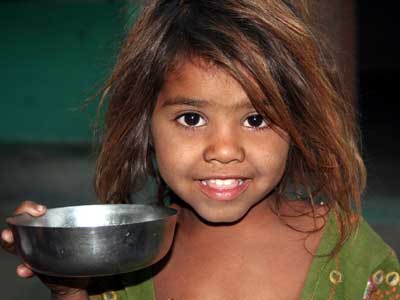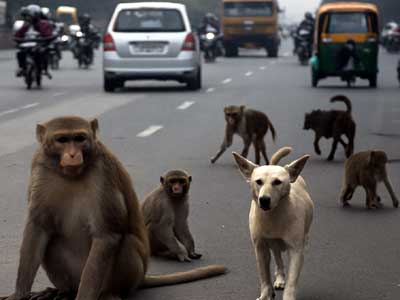Despite over 150 welfare schemes by state and central governments, the population of child beggars continues to rise.
Free rations, homes, medical facilities, and government-run shelters are available, yet child beggars are seen everywhere, from road crossings to religious shrines.
Read in Hindi: देश में बाल भिखारियों की संख्या में हुई तेज वृद्धि
A major concern is the influx of beggars from across the eastern borders, including Rohingyas and Bangladeshis. In Mathura, Vrindavan, and Goverdhan, the number of child beggars has alarmingly increased, leading to petty crimes like snatching purses, pick-pocketing, and fights over looted dividends.
Recently, a child beggar ran away with a lady's purse in Goverdhan. In another incident, a child lifted a mobile phone from a person from Punjab and disappeared in the narrow lanes of Mathura. Complaints are multiplying daily.
Many child beggars are from outside the district. An activist from Vrindavan said, "Often they are part of a big gang headed by a goon who pulls the strings."
Local police do not have exact figures of missing children but admit there has been a noticeable increase in beggars in Mathura, Goverdhan, and Vrindavan. "Begging was once part of the religious paraphernalia, but the entry of child beggars is a serious issue," said a local official.
On the parikrama route in Goverdhan, gangs of child beggars pester pilgrims. "Often you hear of a bag or mobile disappearing. When a kid gets caught, he is let off after a few slaps, which emboldens him to graduate higher into crime," adds Lila Vati, who runs a tea shop.
In Goverdhan, hundreds of beggars line up near the main Daan Ghati temple or on the 21 km parikrama route. In Mathura, railway stations provide shelter to child beggars.
Child beggars are ubiquitous in Braj Mandal, their well-rehearsed lines moving people to give money. Senior police officials do not admit it's a big problem, but pilgrims often return with nightmarish experiences of losing valuables.
Social activists in Mathura and nearby religious places say that food is not a problem. They get enough to eat from temples and ashrams, but the monetary support sustains the local begging industry.
A temple priest from Barsana suggests, "The police should do something about this evil. If the children do not stop begging, they should be put in a reformatory where they can receive education and security."
A senior official agrees, "The problem is there. Smaller kids are local, but bigger ones come from distant districts. When caught, we call their parents and advise them to control their kids. If caught again, they are sent to a reformatory."
Retired police cop Ashok Kumar said, "There have been many cases of bag lifting and snatching by kids operating in groups along the Parikrama marg. Pilgrims usually avoid lodging formal complaints due to time constraints."
A home guard in Vrindavan said many kids work as rag pickers in the morning. "People often complain about their bags or shoes disappearing. The child beggars manage to run away without a trace."
A Goverdhan panda said, "Around festivals or parikrama days, hordes of beggars ask for alms. When pilgrims thin, they collect trash for contractors." Social worker Purushottam added, "Many kids at bus stands and railway stations are addicted to drugs. The state government should rehabilitate them in hostels and ensure they go to school."
Tackling the growing child beggar menace in religious centres like Mathura, Vrindavan, and Goverdhan requires a multi-faceted approach. Implementing rehabilitation programs for child beggars can help them reunite with their families. Providing education and skill development opportunities can empower children to break the cycle of poverty and begging. Vocational training, literacy programs, and access to schools can be effective solutions. Raising awareness about the issue and engaging local communities in finding solutions is crucial. This can involve organizing campaigns, workshops, and events to sensitize people about the dangers of child begging.
Supporting families economically can reduce their reliance on child begging. Initiatives like microfinance, livelihood training, and social welfare programs can help alleviate poverty.
Strengthening laws and enforcement against child trafficking and forced begging can deter perpetrators. Collaborations between law enforcement agencies, NGOs, and community groups can help identify and rescue child beggars.
Establishing alternative care systems, such as foster care or group homes, can provide a safe environment for rescued child beggars. Addressing underlying issues like poverty, unemployment, and lack of education can help prevent child begging.


















Related Items
Balanced population growth accelerated national development
Governments must urgently rethink large-scale global crisis response
Governments should promote nation's festival economy